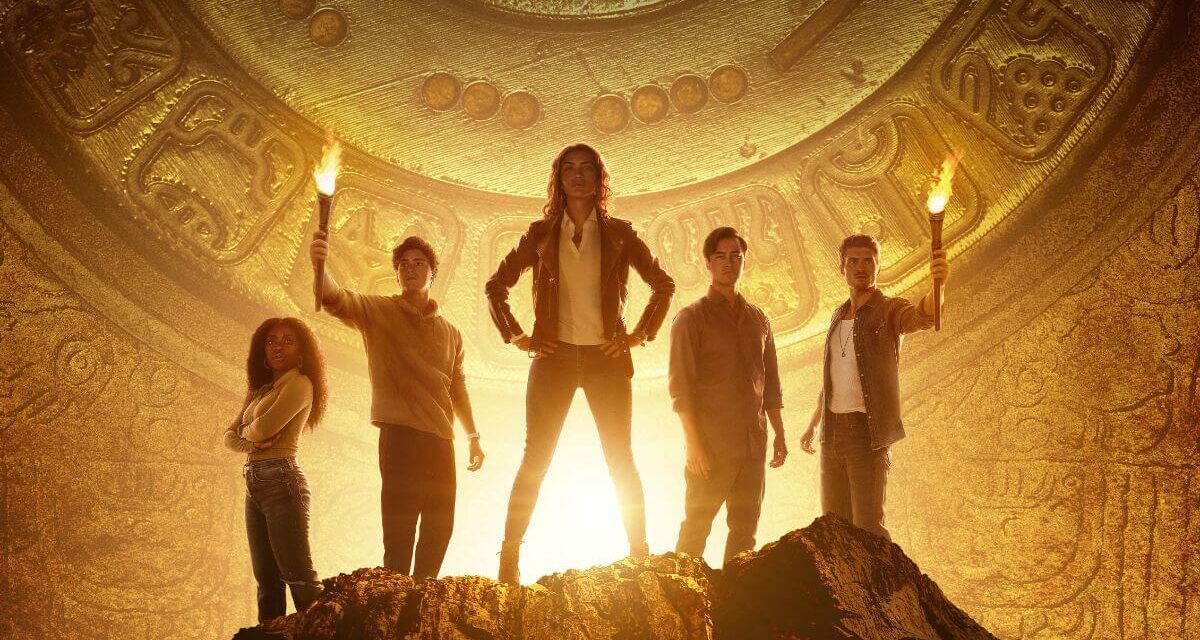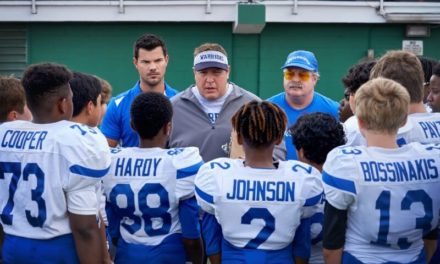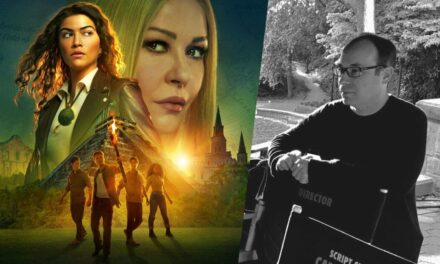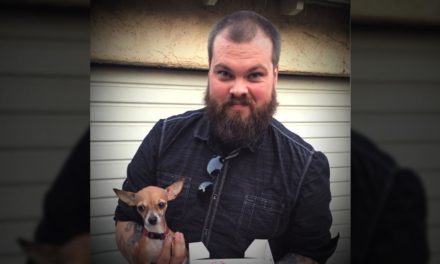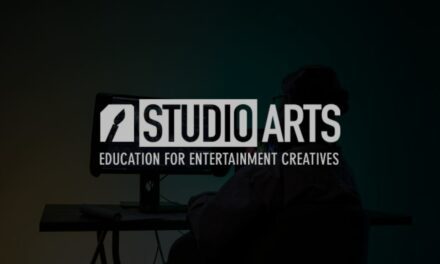Any truly memorable treasure adventure usually has a few key components:
- Ancient obsidian relics of deadly intrigue
- Puzzle pieces worth their weight in murder
- A VFX team that knows how to craft archaic illuminated wonder and some dang good set extension work
By those standards, National Treasure: Edge of History has already made an imprint, and its adventurous tone is made effective by the artists who can craft environments that feel like a crew of Gen. Z mystery enthusiasts fell into Raiders of the Lost Ark.
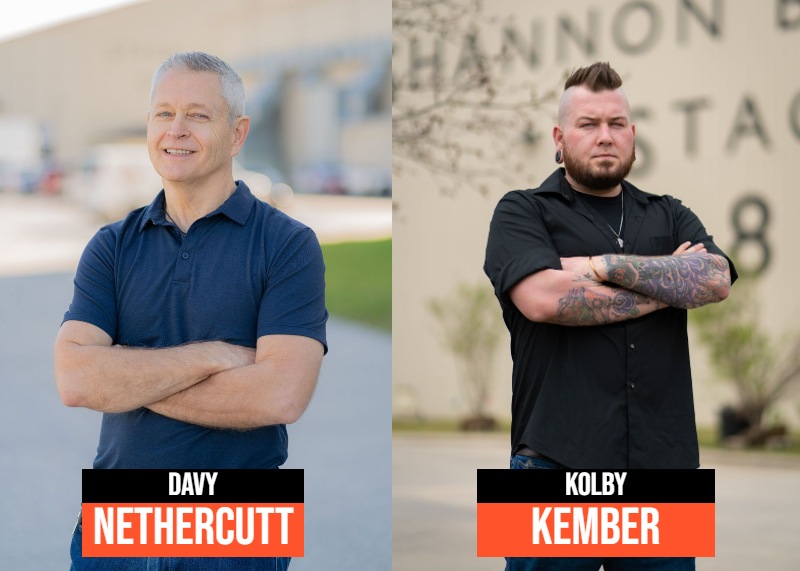
Crafty Apes VFX Supervisors Kolby Kember and Davy Nethercutt are two of these artists. We talked with them about developing the visual effects for National Treasure: Edge of History and where they went creatively to get there.
In Episode One, a lot of the focus is on creating a sense of adventurous mystique around the story, and as the series goes along this is partly done through the VFX that illuminates the relics or text when they’re in a “clue mind”. But in Episode One, you have this big opening sequence where the VFX is most prominent. Can you guys tell me a little bit about bringing that big establishing sequence together?
Kolby: Absolutely, a big part of this show was developing this look for what they call Jess’s “Clue Mind”. The opening sequence in Episode One was a way to show a very stylized story being told by Peter Sadusky, to draw the audience into this world that took place hundreds of years prior and give the viewer a lead into the season. The goal was to create a stylized space that felt fiery and broken during the battles scenes, yet cool and collected for the escape scenes, using warmer and cooler tones to contrast the two stories taking place simultaneously between the battle, and the Daughters of the Plumed Serpent making their escape.
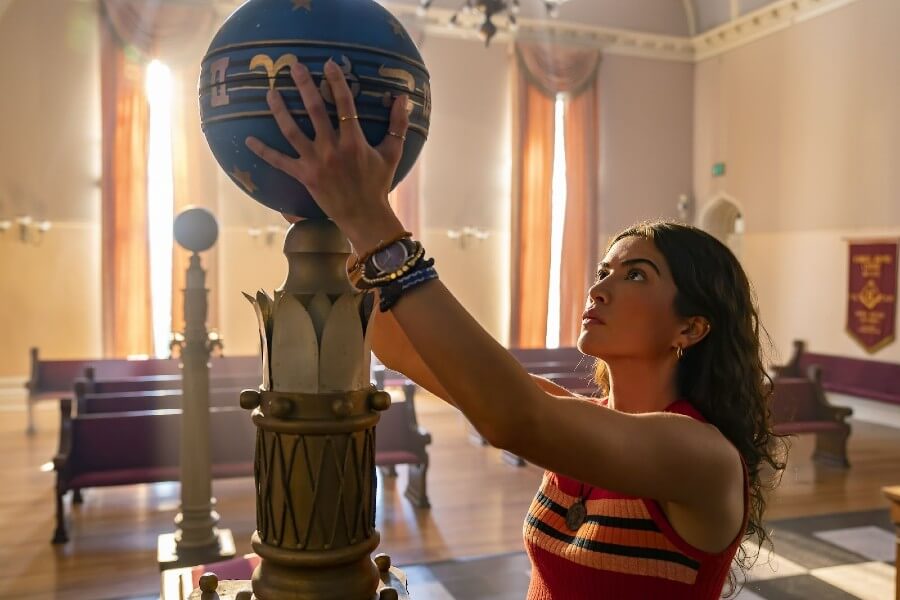
Photo credit: Disney/Brian Roedel
Many of the shots often have very subtle touches to bring out the best in the scene. For example, there are some small sparkles of dust when Jess opens the globe at the freemason meeting room near the end of the first episode. There’s an ambient glow to the relics, or an illuminated star when she figures out that one star is different from the rest. What did you draw from when deciding how best to make these relics and clues “pop”?
Kolby: A lot of this creative planning and credit goes to the writing team on National Treasure Season One. They were very clear and concise about what objects were important, and what clues contained the most value to tell Jess’s story. They also had an extensive research team that was making sure things were historically accurate, that also helped guide us when it came to highlighting the things that were of the utmost importance for the viewer to also pick up.
You worked very closely with Brad Tanenbaum, who also has a depth of knowledge about VFX in addition to his role as producer/director. What was the creative process for you guys with brainstorming effects and working to both pay homage to the original National Treasure, but also establish a tone that showed that this series also has a unique voice?
Kolby: Brad was a pleasure to work with from the beginning. From our initial conversations with Brad and the showrunners, it was very clear that they all wanted to stay true to the original National Treasure movies while bringing it all into a more modern world. We were able to get a head start by filming a lot of our own tech-vis in our office at Celtic (Celtic Studios), to pitch ideas to Brad, who would happily give us guidance and have our backs when pitching concepts and ideas to the showrunners. The creative team had a lot of trust in Brad to make the right decisions, and Brad put a lot of that trust in us to deliver something fresh and modern while keeping the soul of the original movies intact.
Davy: I agree with Kolby. Working with Brad was a great experience. He was easily approachable and very open to discussing different ideas, and always offering great insight. His background and knowledge of VFX really streamlined communication and helped expedite our decision-making process.
Unlike many of the films that come through Crafty Apes, National Treasure was filmed largely in Baton Rouge. Did working on a film right in the city you work in/live in give any extra sense of care or affection towards the material, or was it all just business as usual?
Kolby: Of course! I personally grew up here in Louisiana, lived right outside of Baton Rouge for a majority of my life, so when we found out that National Treasure wanted to shoot in Baton Rouge, I was stoked. Even more so when I learned that the show would be using Baton Rouge as Baton Rouge. It’s great to see the city used throughout the show, and made the experience all the better that the production chose to shoot at Celtic Studios, where our Crafty Apes office is based out of. So we were able to, almost literally, walk out of our front door onto the set in most instances.
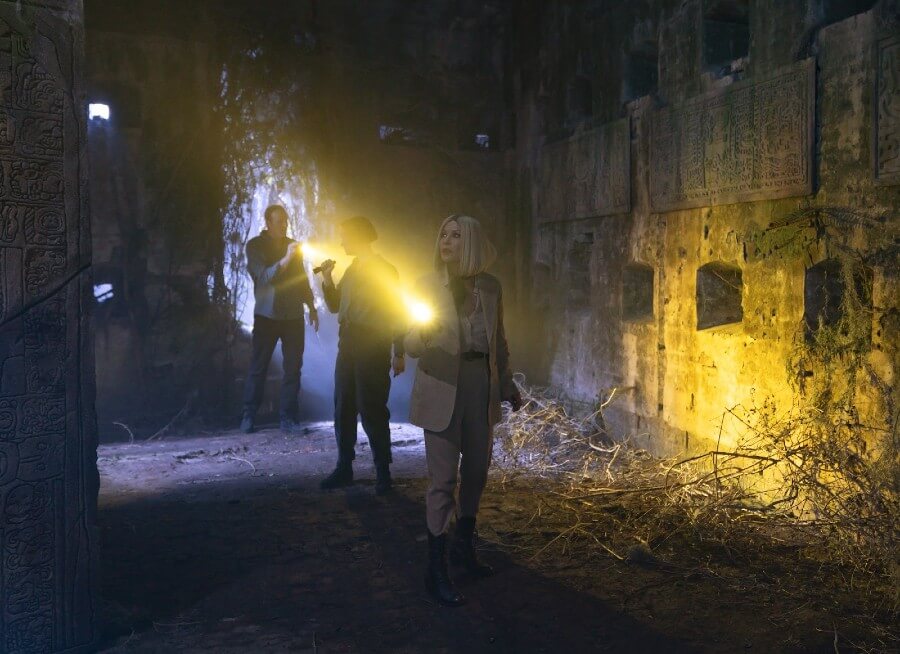
Photo credit: Disney/Brian Roedel
In Episode Six, there’s a rotating suspended coin in the FBI lab while the coroner and Agent Ross talk. So, while the audience might be looking for spectacle, a lot of the shots could be more hidden VFX. Can you talk about any shots you might be proud of that are blended so well that the viewer can’t even tell it’s CG?
Kolby: Certainly. One aspect of this show that I feel our team did particularly well, was transporting the viewer to different states and locations, all while staying and shooting in Baton Rouge. A few examples that come to mind are the Graceland and Alamo locations. These were some well-executed full CG environments that were all shot in front of green and blue screens here in Baton Rouge. Our team did a phenomenal job selling these fully computer-generated scenes into the background of practical locations around Baton Rouge. Another fun one that comes to mind is the Mexico border crossing scene that was shot at the front gate of Celtic Studios right outside of our office.
What was most creatively satisfying for you during the process?
Kolby: This is an easy one for me to answer. We had the opportunity to design and build these really exciting macro shots, that take place inside of elaborate locking mechanisms, that are fully computer generated. We had three throughout the whole show. My favorite one by far was the organ locking mechanism in Episode Seven. One of our lead CG artists on our team, Logan Sayres, really took this one on head first, did extensive research on the internal workings of a practical organ, and did a great job fleshing out what the interior of this thing should look like. It was exciting to learn and see this thing evolve as we moved through it. From getting to work with the animation team to time out cameras and movement speed, to coming up with creative ways to light the interior of the organ, and just getting to dig in with the entire time to design something really cool, that paid homage to the original movies, while camouflaging all of these intricate details from the show to really tell that story.
Davy: It was a very creatively satisfying process, so it’s hard to narrow it down to one thing that was most satisfying, but one aspect I really enjoyed was the set extension work we did on the Alamo in Episode Six. The team did a wonderful job creating the Alamo and then integrating it seamlessly across all the scenes. I think this type of visual effect is most rewarding because much of the audience doesn’t realize it is a visual effect.
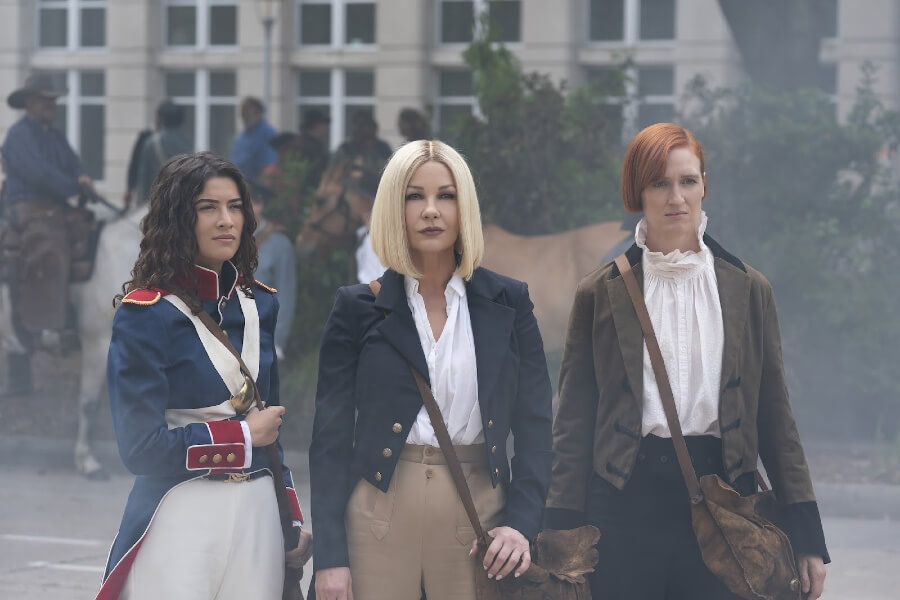
Photo credit: Disney/Brian Roedel
Were there any scenes that you found to be challenging in achieving exactly what you wanted?
Kolby: One of the more complicated scenes for me would have to be when Jess and Raphael come across the tree in the desert in Episode Eight. This one was difficult because we were tasked with creating a very specific type of tree, that is not indigenous to that type of terrain, while trying to make it unique enough to stand out, yet still feel like it should exist there. It took quite a few iterations and back and forth with the creatives on the show before we finally dialed it in, and at the end of the day feel like it really came together, albeit a challenging task.
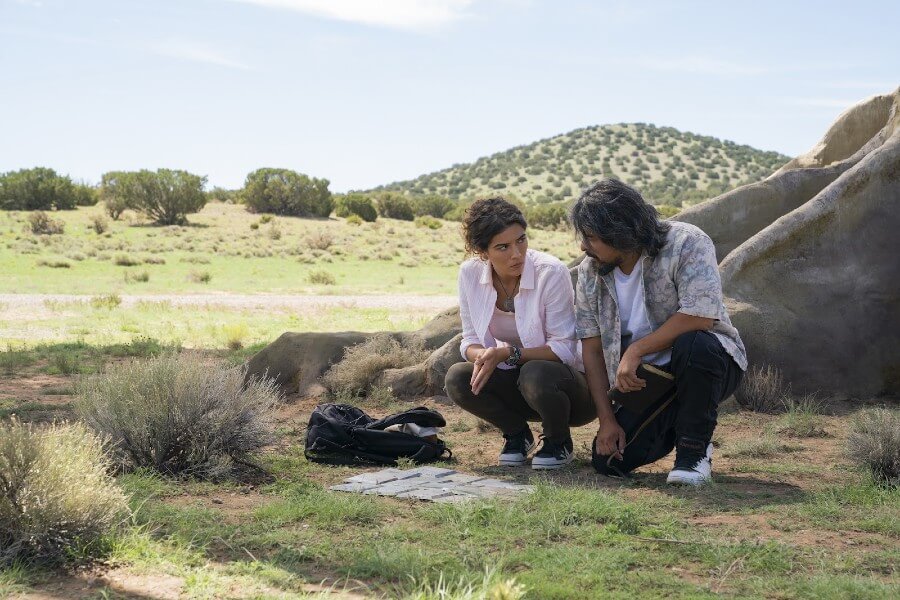
Photo credit: Disney/Brian Roedel
Davy, what was your experience like working on National Treasure: Edge of History?
Davy: Working on the show was very rewarding. From the beginning, it was clear that everyone’s intent was to push the envelope creatively and keep very high production values. The collaboration with all the departments was always cooperative and helpful and people went the extra mile to get us what we needed for VFX. It was a real team effort from pre-production all the way through to the finale.
Can you tell me a bit about how Crafty Apes was equipped to run with this series and execute exactly what was needed in post?
Davy: Kolby touched on this earlier. Our office is on the lot at Celtic Studios. This allowed us to be easily accessible and available to come to set if there were questions during shooting. This made it easy to collaborate daily with all departments and allow production to get what they needed, setting us up for success in post.
What was your most challenging moment on the production?
Davy: I think making sure we got what we needed on set for each “Clue Mind” effect. The showrunners wanted each one to be unique and at the same time have a sense of continuity across each episode. I wanted to make sure we got all the elements on set that would be necessary for us to realize the creative team’s vision. Fortunately, there was a great spirit of collaboration on set, and Crafty Apes is lucky to have a talented VFX team to successfully turn that footage into the final effect.
The season finale of National Treasure: Edge of History airs on Wednesday, February 8th and you can view the season in its entirety on Disney+.

